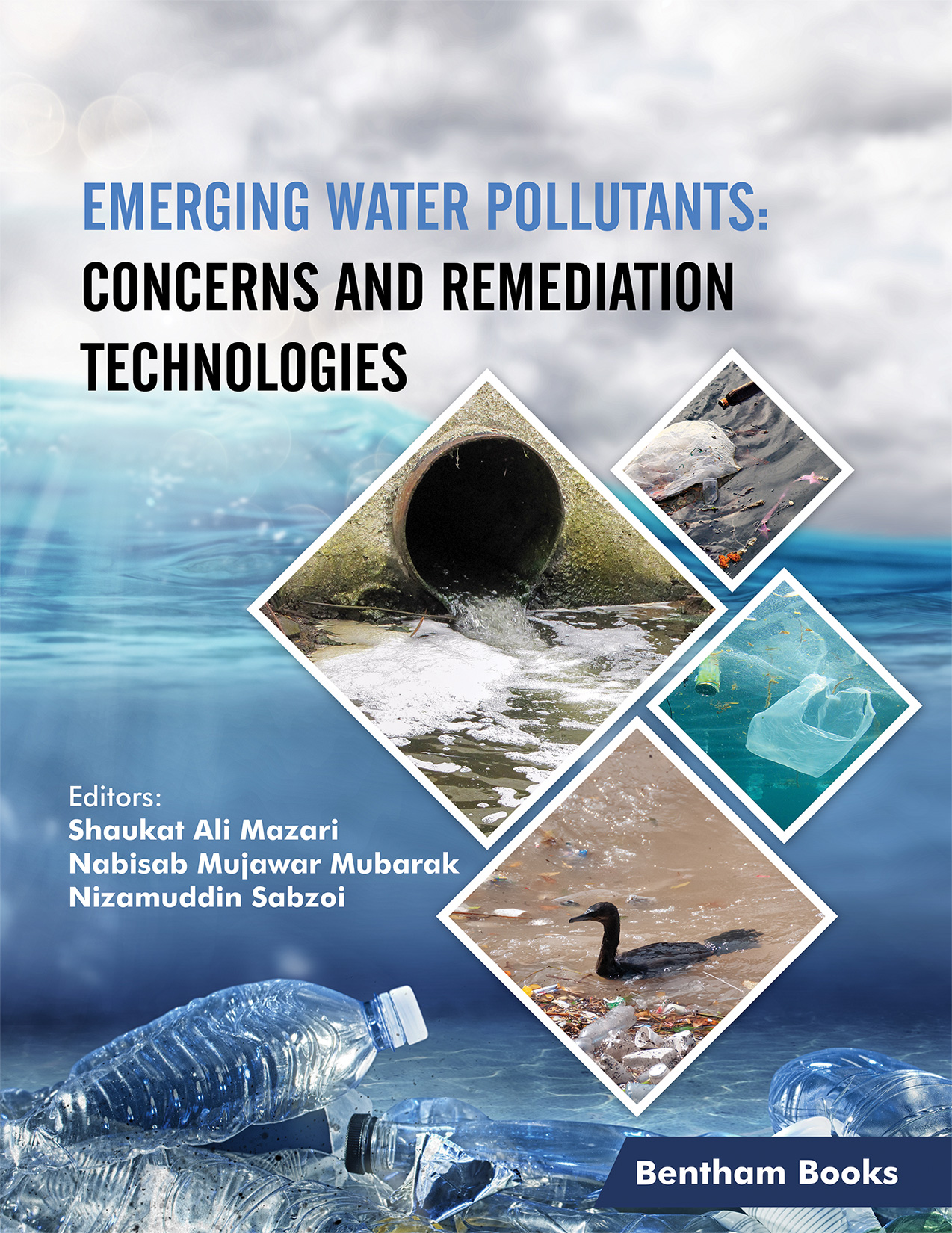With the increasing population, industrial growth and consumer needs, water is getting adulterated with several new contaminants of concern. Nanomaterials, pharmaceuticals & personal care products, endocrine disrupting compounds, artificial sweeteners, surfactants, etc. are some of the emerging sources of water pollutants. Several of these emerging water pollutants introduce noxious effects on humans and the ecosystem. These emerging pollutants need to be removed from wastewater sources. Some of the most investigated technologies for the removal of emerging pollutants from wastewater include catalytic processes including oxidation, membrane process, adsorption, osmotic processes, integrated processes, etc. This book cincludes of thirteen chapters. The first five chapters discuss and analyze the sources of emerging water pollutants, their toxicities, and legislations available to monitor and regulate their emissions. The next three chapters (6-8) are on the risk assessment of emerging pollutants, their fate and life cycle assessment. The last five chapters are on the remediation technologies for wastewater treatment containing emerging pollutants. This book is equally good for academia, industry professionals and students for state-of-the-art learning on emerging water pollutants and their remediation methods.
Chapter 1 provides an extensive review on classification of various emerging pollutants reported worldwide along with their physio-chemical properties and potential environmental effects. Moreover, the legislative policy regulations formulated worldwide for the monitoring of various emerging pollutants are also discussed.
Chapter 2 discusses the state-of-the-art global applications of pharmaceuticals and personal care products, the mechanism of water pollution by pharmaceuticals and personal care products, possible biohazards, and negative impacts on the environment. Besides that, various types of pharmaceuticals and personal care products, the most applied chemical compounds in pharmaceuticals and personal care products have been discussed in this chapter. The chapter also presents a future perspective for reducing the pharmaceuticals and personal care products’ contamination of surface water with cutting-edge technologies along with wastewater treatment.
Chapter 3 focuses on the release of emerging pollutants from the food and packaging industries. This chapter interconnects the use of chemicals and fertilizers for the production and prevention of food crops and food. Also, the use of drugs for livestock and poultry for the food raw materials are highlighted. Furthermore, this chapter summarizes all aspects of emerging water pollutants from the food and packaging industry and highlights the source-sink relation of emerging water pollutants as well.
Chapter 4 introduces nanomaterials and their release to the environment and the relevant concerns. In addition, the effect of various nanomaterials in the aquatic environment is discussed, including the behavior and toxicity of nanomaterials to the aquatic ecosystem. It is important to identify, assess and reduce the environmental impact of these nanomaterials. The chapter further highlights environment-friendly and advantageous use of engineered nanomaterials for a sustainable world.
Chapter 5 highlights the industrial sources of emerging water pollutants, their possible routes to waterbodies, and their respective impacts on the environment and ecosystem. Furthermore, the concerns of emerging contaminants from industrial operations and processes have also been discussed. Furthermore, an insight into the challenges in minimizing water pollution is also focused on the shared benefit.
Chapter 6 discusses the risk assessment of the emerging water pollutants. The environmental risk assessment of emerging pollutants can help to indicate potential risks associated with these substances, highlighting the importance of the identification of their hazard, dose response, exposure assessment and finally their risk characterization. The chapter provides useful insights into the recent findings related to the pollutants’ effects and their assessment approaches.
The major focus of chapter 7 is the fate of emerging water pollutants. The chapter introduces emerging pollutants of concerns, and identifies their routes to sources where they end up. More importantly chapter highlights the end sink of pollutants with potential threats and risk evaluation for plants and human health through the end sink.
Chapter 8 briefs on the lifecycle assessment of emerging water pollutants. This includes the process of lifecycle assessment for various emerging pollutants, including the release and accumulation to examine the impacts and associated risks to water quality, the aquatic environment, and ultimately on the human beings. Furthermore, a deep insight into lifecycle has been provided that may help to understand the flow of pollutants in environment and fill the existing knowledge gaps.
Chapter 9 introduces various conventional wastewater technologies such as disinfection, desalination, coagulation, chemical precipitation, filtration, adsorption, etc. Some of these technologies have potential uses for the removal of emerging water pollutants. Furthermore, the chapter discusses the limitations of these processes and their advantages over the others.
Chapter 10 briefly describes advanced membrane processes for the removal of emerging water pollutants. Various membranes, such as nanofiltration, reverse osmosis, membrane bioreactors have been discussed and evaluated for the removal of emerging water pollutants in detail. Furthermore, challenges related to membrane technologies such as their efficiency, prevention from fouling, stability when using cleaning agents, permeability, cost, and energy reduction have been discussed as well.
Chapter 11 discusses osmotic and filtration processes for the removal of emerging water pollutants. A detailed account has been provided for the pressure driven membrane filtration processes including micro-filtration, nano-filtration, ultra-filtration, reverse osmosis, forward osmosis, osmotically driven membrane filtration processes such as pressure retarded osmosis, etc. Apart from their technicalities, the performance evaluation of these osmotic processes has also been given.
Chapter 12 brings a detailed account of various catalytic processes for the removal of emerging water pollutants. Some of these processes include ozonation, electrocatalysis process including electrocatalytic oxidation, electro-Fenton process, photoelectro-Fenton process, photocatalysis, reduction by hydrodehalogenation, etc. Moreover, the features, mechanisms, and potential applications of catalytic processes in the treatment of emerging water pollutants are discussed in detail.
Shaukat Ali Mazari
Department of Chemical Engineering
Dawood University of Engineering and Technology
Karachi 74800
Pakistan
Mubarak Nabisab Mujawar
Department of Chemical Engineering
Faculty of Engineering and Science
Curtin University
98009
Miri Sarawak
Malaysia
Nizamuddin Sabzoi
School of Engineering
RMIT University
Melbourne 3000
Australia

